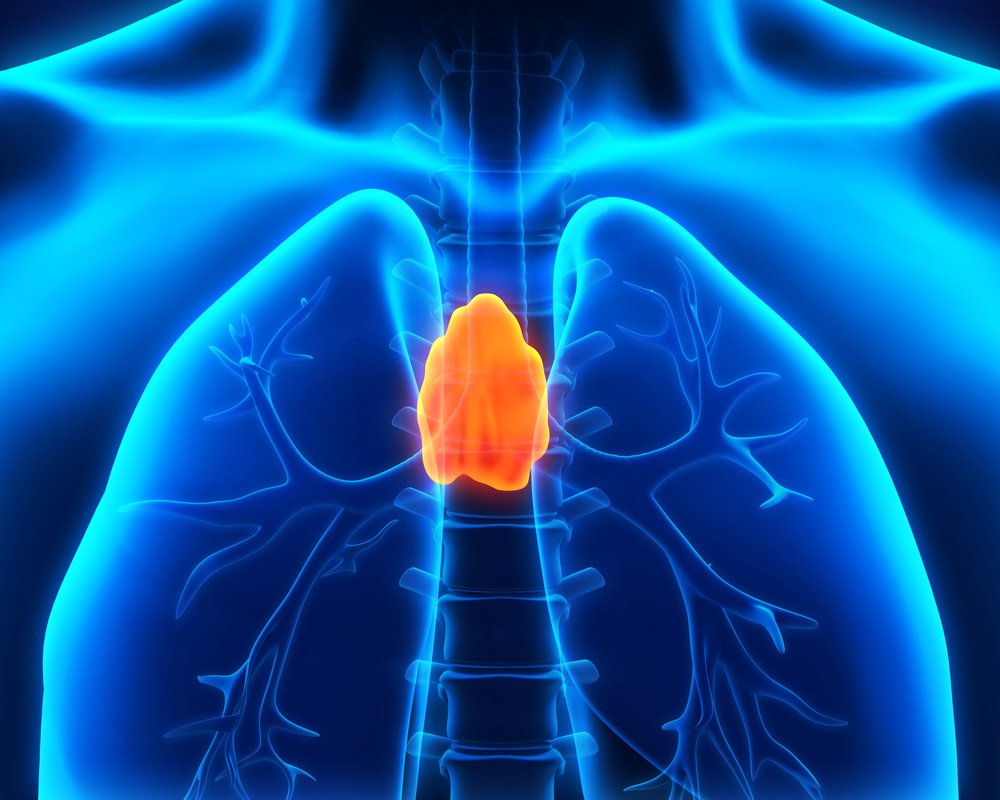Women with Myasthenia Gravis Have Poorer Quality of Life, But Thymus Removal Helps, Study Says
Written by |

Quality of life among myasthenia gravis (MG) patients is worse in women than men, but removing the thymus in women eliminates this disparity, a recent study shows.
The study, “Gender and Quality of Life in Myasthenia Gravis Patients from the Myasthenia Gravis Foundation of America Registry,” appeared in the journal Muscle and Nerve.
Myasthenia gravis is a neuromuscular autoimmune disease in which the immune system produces autoantibodies that attack the connection between the nerve and muscle, called the neuromuscular junction. This leads to muscular weakness and fatigue, causing disability and impaired quality of life.
Researchers believe the thymus, a gland in the chest that regulates the development of a type of immune cell, may trigger or maintain the production of these autoantibodies. Some MG patients show thymus abnormalities, such as tumors or an enlarged gland. Thymus removal in these cases has been shown to improve patients’ clinical outcomes.
However, quality of life in general, as well as the effect of thymus removal, among myasthenia gravis patients has been poorly described.
Researchers investigated the quality of life of 1,315 adults, including 827 women, with myasthenia gravis using a U.S. database called the MG Patient Registry. Patients’ demographic information and disease-related history were analyzed, and disability, fatigue, depression, and quality of life were assessed through self-reported measurement systems.
Female participants were significantly younger, had disease symptoms at a younger age, and took longer to be diagnosed, compared with men. They were also more likely to have thymus abnormalities and to have undergone thymus removal.
Researchers found that participants in general had a poor quality of life, with significant fatigue and depression, but the effects were worse in women. Researchers noted that this difference might be due to a more severe condition in women, or differences in therapies’ effectiveness between genders, but further research is needed to clarify why this gap exists.
This gender disparity in quality of life disappeared when comparing men and women who had their thymus removed. Thymus removal improved quality of life in women, but not in men, suggesting that men do not respond to thymus removal as well as women. Previous trial results also indicated that thymus removal helped some MG patients a lot, but others a lot less.
“Our study demonstrates gender differences in MG and provides valuable clues that the thymus might play important role as a mediator,” the team wrote.
Researchers look forward to future studies that shed more light on the interaction between gender and the thymus in the development of myasthenia gravis.






Julia
Research is so important. Thank you for sharing the results. This article brought reassurance(as I am 7 months post-thymectomy removal) and hope for my future!
Jen
I had my thymus gland out at age 18 in 1997 and have had full remission ever since!! I only have a 20% chance of full remission as I get older but I hardly ever think about it! I've had two children with no complications and couldn't be more blessed!
Beverly Watrous
At around 31-years old, I started with vertical/diagonal double vision and speech that went from nasal to slurred to garbled to paralyzed vocal cords. When I stopped talking, normal speech resumed but it started up again shortly thereafter. I remained misdiagnosed for 20 years. I saw Opthalomologist several times a year for prism measurement. Every time I asked about MG, I was told I had congenital diplopia worsening due to age. However, I wasn’t born with double vision and 31 isn’t indicative of “age” related conditions. As years went on, I progressed to difficultly holding my arms up to brush my teeth, wash and blow dry my hair. When I complained about these symptoms as well as difficulty swallowing and breathing, I was diagnosed with depression. This went on for the 15th to the 20th year until I was unable to move, see, eat, hold my head up or function in any capacity. By the time I was properly diagnosed, my anti-acetylcholine tiger was 111.00 and positive for binding, modulating and blocking. When I finally got to a university teaching hospital specializing in MG, the single fiber EMG was off the charts and I was admitted for two rounds of Plasmapheresis and a thymectomy. I’m on Eculizamab but remain resistive to all treatment.